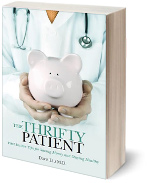Doctor, medical students – listen to your patients! His pain was from flipping a bed!
Even in the 21st century, talking to your doctor about your symptoms matters. This is something I tell my medical students. Talk to your patients! Listen to your patients! Use their story to determine what tests and imaging tests to order, if needed. Don’t get fooled by technology or be in awe of its importance. It is the patient’s experience that matters. It isn’t the other way around as we see from an office visit many years ago.
I had known Mr. Sanchez for years. When he talked, he was forced to pause every couple of sentences to catch his breath. His pudgy and wrinkly elderly face was a consequence of both his periodic use of prednisone to help calm his emphysema and years of prolonged sun exposure and smoking.
But on this day, Mr. Sanchez’s visit had nothing to do with his breathing. He was suffering from severe abdominal pain and had been to the emergency room twice.
Both times, the diagnosis was unclear. He was told that he might have passed a kidney stone. Certainly, when I greeted Mr. Sanchez he was still in excruciating pain.
During his first emergency room evaluation he had a CT scan of the abdomen. It did not show a kidney stone or any other abnormalities with his internal organs that could explain his symptoms. He returned a couple of days later, still in severe pain. Another evaluation was done and an abdominal x-ray still did not reveal anything.
I asked Mr. Sanchez to tell me his story and relay the symptoms he had noticed before going to the emergency room. He complained of sudden, severe pain radiating from the low back to the front of the lower abdomen. He had no fever. The pain caused him to be extremely nauseated and was a lot worse when he lay down. Only when he sat upright or stood up did the pain improve slightly.
Odd. While the location and severity of the pain could have been caused by a kidney stone, changing positions would generally not affect the intensity of the pain. He also denied seeing any blood in the urine. His symptoms weren’t entirely consistent with a kidney stone.
I asked him some other questions. When did his symptoms start? What had he been doing that day?
He related a typical quiet retiree’s day: he got up, ate breakfast, and read the paper. Nothing out of the ordinary occurred — except that he did, however, flip his mattress that morning. The pain seemed to come on shortly after that.
This additional information led me to believe that his pain could have been caused by a nerve being pinched by a cracked vertebral bone in the spinal column of his back. While normally the bones in the back are quite strong, his use of prednisone over the years could have weakened them. A broken vertebral bone would explain why the pain was worse when lying down. And the pinched nerve would refer pain from the back to the front of the abdomen, where he felt it most.
Mr. Sanchez was exquisitely sensitive when I pushed on his spine. An x-ray of the spine showed a collapsed vertebral bone due to osteoporosis. With the correct diagnosis, Mr. Sanchez was given strong narcotic medications, started on treatment for osteoporosis, and told to expect
his symptoms to slowly get better over the next six to eight weeks.
With the correct diagnosis and appropriate treatment, Mr. Sanchez now felt confident and less worried. It would take weeks to get better and not days.
At a follow-up appointment a few weeks later, Mr. Sanchez felt better and had no more back pain or abdominal pain.
Talking to patients still matters in the 21st century!
 Get important exclusive advice and tips on how to save money while staying healthy.
Get important exclusive advice and tips on how to save money while staying healthy. Learn how to make intelligent choices in America's Healthcare System.
Learn how to make intelligent choices in America's Healthcare System.